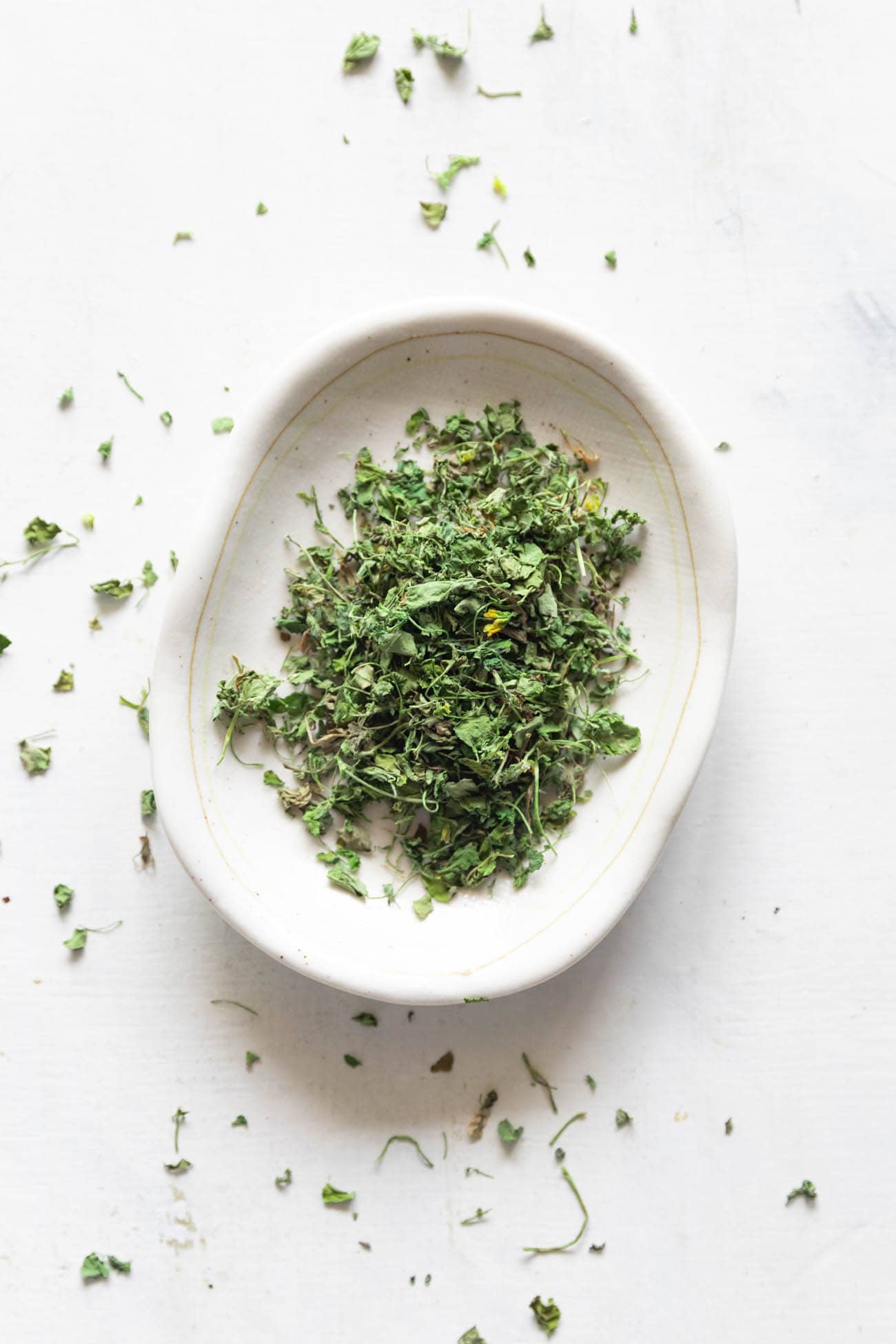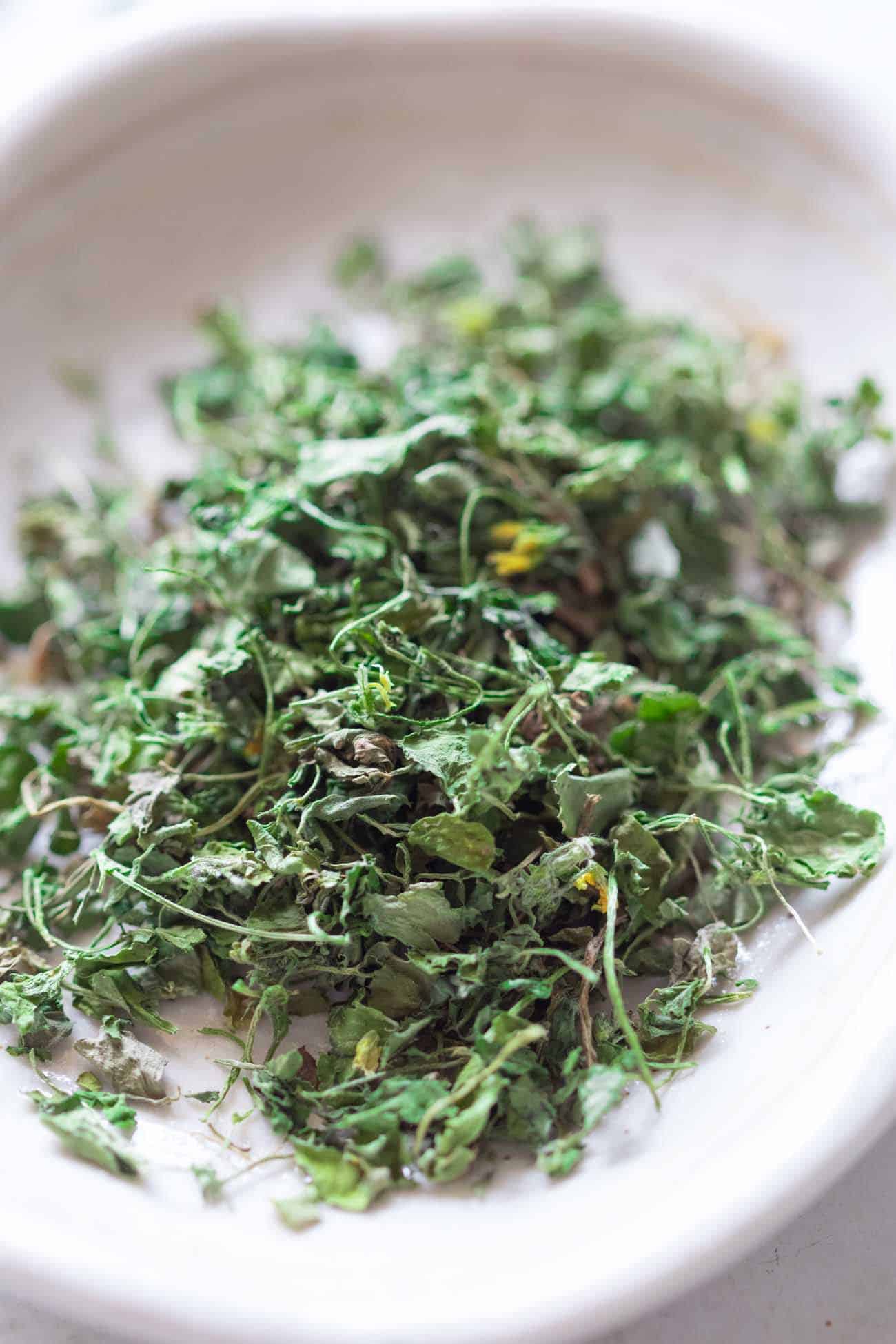on Sep 22, 2023 I think Kasuri Methi is easily one of my most favourite herbs to use since it elevates so many dishes that would really feel incomplete without it (like Butter Chicken and Paneer Butter Masala of course)! In this blogpost I tell you everything you need to know about this magical herb so you know exactly how and when to use it.
What is Kasuri Methi?
Kasoori methi is basically sun-dried fenugreek (methi) leaves, a fragrant clover-like herb with a slight bitterness. These leaves are typically roasted, crumbled or powdered and then stirred into dishes after they’ve finished cooking.
Kasuri Methi Flavour Profile
Fenugreek is best described as having a maple-like aroma, lending a deep savoury note to the dishes it’s added to that is undercut with a slight bitterness. Its flavour is best compared to that of celery and fennel, with an added smoky aroma. Sun Drying the fenugreek leaves retains this aromatic nature, though the flavour mellows out. Most of the dishes that Kasoori Methi is added to are tomato-based, so the herb’s distinct bitterness adds a depth of flavour that cuts through the sweetness of the tomatoes.
Kasuri Methi Substitutes
The best substitute for Kasuri methi is fresh fenugreek leaves, but since these are a lot more bitter than their sun-dried counterparts, use fewer fresh leaves as an alternative. Make sure to chop them roughly (if at all) and not finely because that will release more of the bitter notes.
Kasuri Methi Uses
So Kasuri Methi is traditionally used as a finisher (added right at the end to optimize its flavour and aroma) – in creamy dals like this Slow Cooker Dal Makhani, in rich Butter Chicken and Paneer Butter Masala, hearty Mutton Curry, homely Rajma and Chana Masala – basically in most tomato-based, masala-rich dishes that can benefit from some flavour-balancing. But it can also be added as a herb in marinades such as in this Paneer Pakora recipe, a creamy curry like Chicken Kali Mirch or for seasoning pulaos like my Kabuli Chana Pulao. I also use it to make Kasuri Methi Parathas, instead of the traditional methi parathas which use fresh methi leaves, and that works insanely well. So it can also be the star of the recipe. Either way, it’s a winner to have on hand for sure!
Kasuri Methi Benefits
This herb has phytonutrients like folic acid, niacin, as well as Vitamins A, B6, C, and K. The leaves also contain minerals like copper, calcium, iron, and zinc manganese, iron, and potassium.
Kasuri Methi – To buy or to make?
While you can sun-dry fresh methi leaves at home to make Kasoori Methi, there isn’t a major quality difference when you buy it from the store and honestly, it’s just a lot easier. I’d recommend buying it in smaller quantities (50g packs vs 200g packs) so that the herb retains its freshness, since you only use a little at a time anyway.
Kasuri Methi Powder
Kasuri Methi is dry roasted on a slow flame (to release its aroma) and then crushed to make a fine Kasuri Methi Powder that can be sprinkled as a garnish or an ingredient. You can use the powder or dried leaves to make a delicious Kasuri Methi Aloo that’s a lot less bitter, and a lot more aromatic than the traditional methi aloo made with fresh fenugreek. This is a great way to introduce methi into your kiddos’ diets, it’ll win them over! Do you have any interesting Kasuri Methi uses/recipes? Message me over on my Instagram. I’d love to hear about them!

